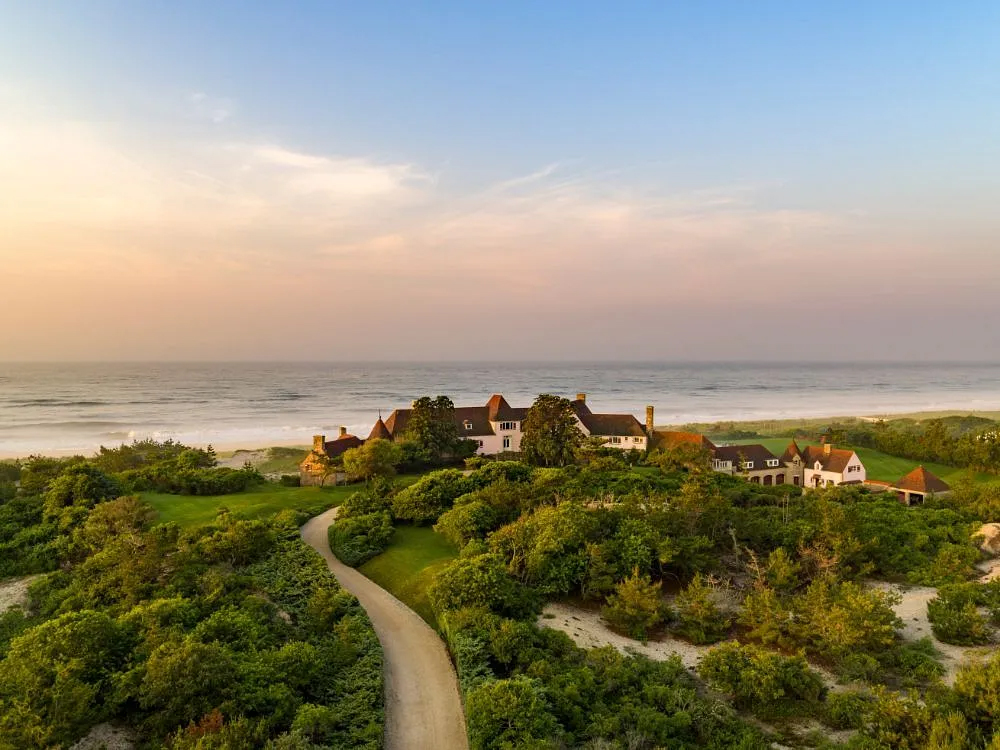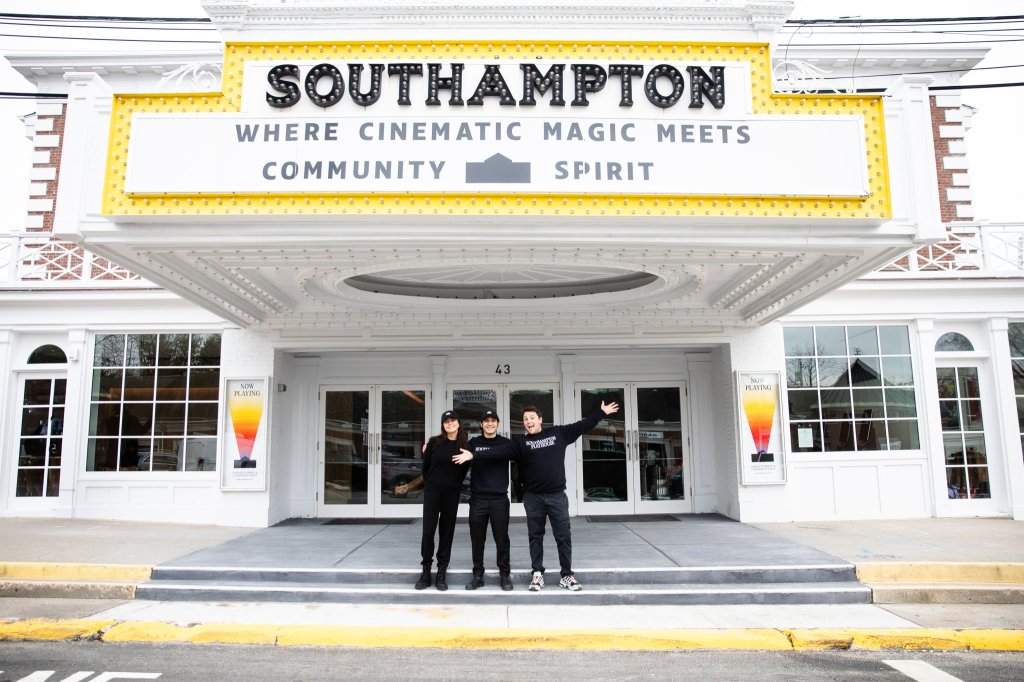Oceancastle – The Story of a Storied Hamptons Estate

Many mansions on the ocean in the Hamptons have interesting stories to tell. But none, I think, can match what went on over the years at 840 Meadow Lane in Southampton, a home built in the Roaring ’20s that sold in November 2021 for $70 million. Its story includes murder, a botched suicide, suits of armor, jail time and two shockingly wild parties in different eras that made national news — one involving a rampage that ended with all 1,600 windows in the house broken and the other, 12 years later, involving drugs, sex and chains.
Oceancastle was also home for Barry Trupin for a while, a man who later went to jail in 1996 for evading more than $6 million in taxes by selling real estate, antique armor, a stolen Marc Chagall painting and other collectibles.
In January 1929, Wall Street broker William F. Ladd bought an 8-acre parcel with 512 feet along the ocean and hired architect Archibald Brown to build a sprawling, 15-bedroom, 19,000-square-foot “cottage” with turrets, cobblestone roofing, and half-timbered siding in the style of a Tudor castle. He wanted it completed in six months. Mr. Ladd had recently married a beautiful young woman and he wanted to be in residence there to celebrate the Fourth of July with her.
The workmen got it done. But in April as it was being completed, doctors told Mr. Ladd he had cancer and only a few weeks to live. Distraught, he wrote his wife a note apologizing to her and then shot himself in the head. He was 63. But the shot was not fatal. At least not at first. He lived on for several months, succumbing finally at his apartment on the Upper West Side.
1949: Millionaire Donald S. Leas Jr., who owned the “Westerly,” another oceanfront mansion nearby, decided to hold an enormous coming out party for his stepdaughter Fernanda Wanamaker Wetherill on Labor Day weekend. The guest list grew and grew, ultimately exceeding 800. It would be the party of the year. And Leas needed help from his friends to put up all these guests. He reached out to, among others, Robert Harris, another millionaire and the current owner of Oceancastle. Could Harris host some of Wetherill’s guests? Harris said of course. What a disaster. These guests, mostly young men out of control, broke more than 1600 window panes, partied through the night and swung from the chandeliers.
1980: Roy Radin, age 31, now owned Oceancastle. Overweight, rich and strange, he was said to stroll through town carrying a cane and wearing a black cape and panama hat. He’d made his fortune in the entertainment business. Old, has-been vaudeville hoofers performed, supposedly raising money for the Police Benevolent Association. Radin, however, kept the bulk of it. Meanwhile, the local Southampton police department ignored the wild drug-fueled Oceancastle parties where women wearing chains whipped each other, as reported by the Los Angeles Times. A disheveled young woman, Melonie Haller, a former Playboy model, was found semi-conscious in a seat on a Long Island Rail Road train headed for New York. It created a sensation.
The parties were over. And so, Radin decided — over his mother’s objections (she lived there with her son) — to change his life by heading off to Hollywood to produce movies. There, friends said, he began hanging around with drug dealers who were supplying cocaine to the film colony, reported the Los Angeles Times. He disappeared, and his body was found almost a month later, full of bullet holes in a National Forest north of Los Angeles.
1984: In the winter of that year, Trupin, a shady figure that nobody in the social set knew, bought Henry F. DuPont’s 32-bedroom Georgian-style estate four houses down from Oceancastle, then began to convert it into a French Gothic affair with turrets, an Irish bar (he’d had it flown in from Dublin), a prayer room and an indoor shark-infested aquarium for snorklers. A barbed wire fence patrolled by armed guards kept everything safe.
Horrified, the social set began a campaign to get this strange person out.
During the controversy, Trupin and his wife Renee invited me and my wife to a private dinner at the house he was renting while the two years of planned renovations on his castle proceeded.
The rental was Oceancastle. He knew nothing of its history. I enlightened him.
After an amazing six-course dinner for the four of us served under a white tent on the lawn between Oceancastle and the sea, we all went down to tour its basement. Murals of Coney Island in its heyday were on all the basement walls. A boardwalk led us alongside dozens of mechanical games of chance, penny arcades, and pinball machines Trupin had bought from entrepreneurs at Coney Island who were leaving the business. Upstairs, he showed off his collection of suits of armor, draperies and medieval paintings. All would be moved into his great French compound when completed. He also was going to throw a huge party and invite all of Southampton society to Oceancastle in the upcoming weeks.
Well, it happened, but it didn’t do any good. Eventually, Trupin and his wife were driven out of town, their French Gothic affair not completed. That building eventually got sold to Calvin Klein, who tore it down and built a glass and steel home, which is still there today.
Eventually, it was learned that Trupin’s suits of armor, paintings and hangings were hot goods he’d bought from crooks. He also got caught up in other financial scandals and, as a result, went to prison. His wife, separately, moved to Paris and married a count. We corresponded by email for a while.
The new owners of Oceancastle say they found shards of glass on the property they believe came from Wetherill’s wild party all those years ago.



